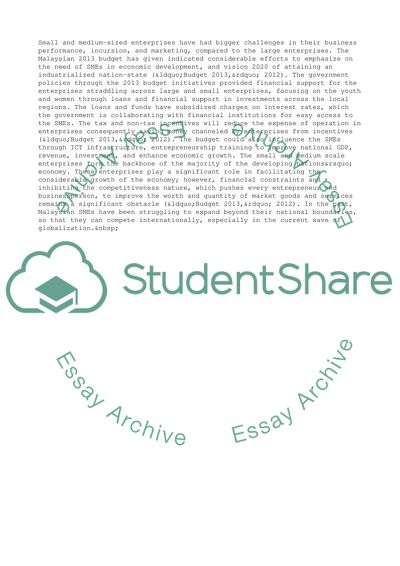Cite this document
(“Impact of Malaysia Budget 2013 on Small and Medium Enterprises Assignment”, n.d.)
Impact of Malaysia Budget 2013 on Small and Medium Enterprises Assignment. Retrieved from https://studentshare.org/business/1612392-impact-of-malaysia-budget-2013-in-small-bussines-enterprise
Impact of Malaysia Budget 2013 on Small and Medium Enterprises Assignment. Retrieved from https://studentshare.org/business/1612392-impact-of-malaysia-budget-2013-in-small-bussines-enterprise
(Impact of Malaysia Budget 2013 on Small and Medium Enterprises Assignment)
Impact of Malaysia Budget 2013 on Small and Medium Enterprises Assignment. https://studentshare.org/business/1612392-impact-of-malaysia-budget-2013-in-small-bussines-enterprise.
Impact of Malaysia Budget 2013 on Small and Medium Enterprises Assignment. https://studentshare.org/business/1612392-impact-of-malaysia-budget-2013-in-small-bussines-enterprise.
“Impact of Malaysia Budget 2013 on Small and Medium Enterprises Assignment”, n.d. https://studentshare.org/business/1612392-impact-of-malaysia-budget-2013-in-small-bussines-enterprise.


